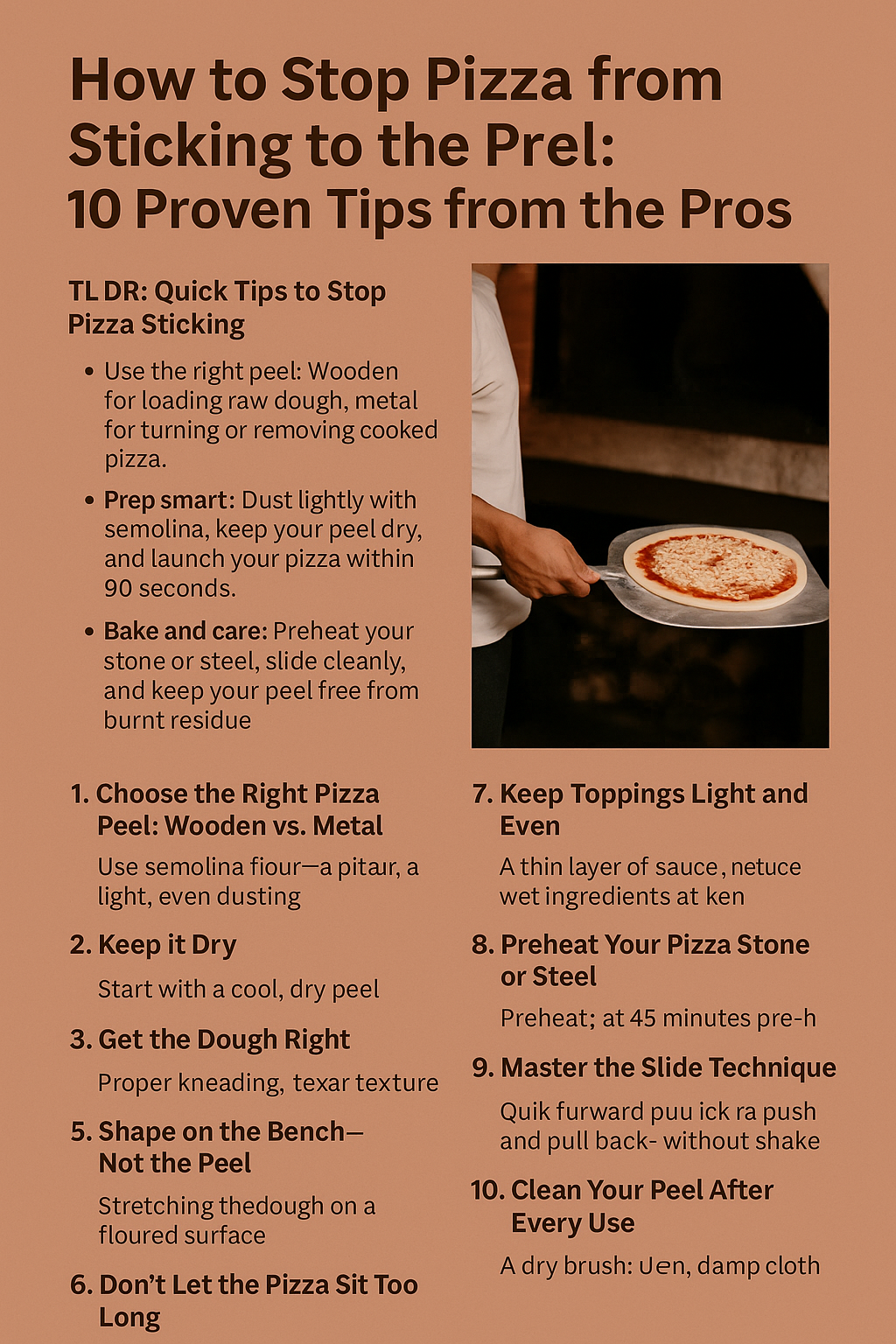Ever launched your pizza into the oven only to have it stick stubbornly to the peel? You’re not alone. Dough tearing, toppings sliding off, and sticky bases are some of the most common frustrations in commercial kitchens.
The good news — with the right pizza tools, flour, and technique, you can prevent sticking for good.
At Hospitality Connect, we’ve seen this problem in busy pizzerias across Australia, and we know exactly how to fix it. Follow these 10 expert tips to keep your pizzas sliding effortlessly every time.
🔧 Quick Tips to Stop Pizza Sticking
-
Use the right pizza peel— wooden for loading, metal for turning.
-
Dust lightly with semolina or cornmeal.
-
Keep your peel clean, dry, and cool.
-
Launch your pizza within 90 seconds of topping.
-
Always preheat your pizza stone or steel
1️⃣ Choose the Right Pizza Peel: Wooden vs. Metal
🍞 Wooden Peels — For Raw Dough
A wooden pizza peel is ideal for loading pizzas into the oven. Its slightly rough surface prevents sticking by absorbing light moisture from the dough. Dust it with semolina or durum wheat flour before placing your base — but work quickly. Even the best dusting can’t stop dough from sticking after a few minutes.
🔥 Metal Peels — For Cooked Pizza
Once your pizza starts to crisp, switch to a metal peel. Its thin edge slides under the base easily, perfect for turning or removing baked pizzas. However, raw dough will cling to it — so use wood for prep, metal for retrieval.
💡 Explore our Professional Pizza Peels & Paddles— trusted by chefs and commercial kitchens across Australia.
2️⃣ Prep Your Peel the Right Way
The type of flour you use is crucial. Professionals prefer semolina or durum wheat flour because they stay dry and roll under the dough rather than absorbing moisture. A light dusting creates a smooth slide — too much can burn and add bitterness.
3️⃣ Keep It Dry
Moisture is your biggest enemy. A damp peel turns flour into glue. Always start with a cool, dry surface, and never wipe your peel with a wet cloth before use.
4️⃣ Get the Dough Right
Sticky dough is the number one culprit. Aim for a dough that’s soft yet elastic — it should spring back when pressed. Use strong bread flour and knead thoroughly for good gluten development.
⚙️ Save time in prep with a Commercial Dough Mixer— designed for consistency and efficiency in busy kitchens.
5️⃣ Shape on the Bench — Not the Peel
Stretch and shape your dough on a floured workbench instead of the peel. This prevents buildup and lets you maintain control over the pizza’s size and thickness.
Once shaped, transfer it to your peel, add toppings, and bake immediately.
6️⃣ Don’t Let the Pizza Sit Too Long
Once your base and toppings are on the peel, time is ticking. If you wait longer than 90 seconds, moisture begins to soften the base, causing sticking.
Work quickly — sauce, toppings, and launch.
7️⃣ Keep Toppings Light and Even
Heavy toppings lead to soggy dough. Apply a thin, even layer of sauce and pre-cook watery ingredients like mushrooms or spinach. This ensures even cooking and prevents sticking.
🍅 Find Chef Inox Frying Pans— ideal for pre-cooking toppings and finishing sauces.
8️⃣ Preheat Your Pizza Stone or Steel
A hot surface is essential for a crisp, non-stick base. Preheat your pizza stone or steel for at least 45 minutes before baking.
The intense heat sets the crust instantly, helping your pizza slide off cleanly every time.
9️⃣ Master the Slide Technique
Launch your pizza with a quick forward push and pull — not a shake. Keep your peel level with the oven surface, and let gravity do the work. Practice with an empty dough on a cold stone to perfect your timing and movement.
🔟 Clean Your Peel After Every Use
Burnt flour and cheese cause drag. For wooden peels, use a dry brush — never soak them. For metal peels, wipe with a damp cloth, dry completely, and sanitise with Nowchem Cleaning Products
A clean peel guarantees smoother slides and longer tool life.
🍽️ Finding the Right Pizza Peel or Paddle
When selecting your pizza peel, consider:
-
Shape: Round for flexibility, square for support.
-
Handle Length: Short for compact ovens, long for deep deck or conveyor ovens.
-
Material: Wood for loading raw dough, metal for turning and serving.
Browse Hospitality Connect’s Pizza Equipment Range— featuring peels, stones, cutters, paddles, and prep tools designed for professional use.
🔗 External References
🍕 Frequently Asked Questions (FAQs)
1. Should I spray my pizza peel?
No — oil makes the dough stick more and can burn in the oven. Keep your peel dry and dust lightly with semolina or cornmeal.
2. What flour stops dough from sticking?
Use semolina, durum wheat, or fine cornmeal. These grains roll beneath the dough instead of absorbing moisture, keeping it mobile.
3. What’s the best pizza peel to prevent sticking?
A wooden peel for raw dough and a metal peel for baked pizza. This combination guarantees smooth launches and effortless retrieval.
👉 See our Professional Pizza Peels
4. How can I avoid pizza sticking to the peel?
Keep your peel dry, dust lightly, and work fast. Launch the pizza within 90 seconds after topping to prevent moisture absorption.
5. Should I oil my pizza peel?
Never. Oil burns and leaves sticky residue. Clean your peel after every use using Nowchem Cleaning Products for best hygiene and performance.










